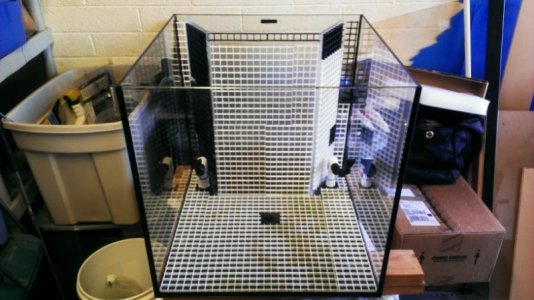LouisianaReefer
New member
Frag rack rock
Frag rack rock
This is my proposition for more attractive frag tanks... using a custom "frag rack rock like this one." The first picture is of my toadstool leathers shortly after cutting. The second picture includes is about a month after the fragging. In my opinion, this looks better than eggcrate.
<a href="http://s1365.photobucket.com/user/Kevin_Olivier/media/fragrack1_zpsd1f03fc8.jpg.html" target="_blank"><img src="http://i1365.photobucket.com/albums/r741/Kevin_Olivier/fragrack1_zpsd1f03fc8.jpg" border="0" alt=" photo fragrack1_zpsd1f03fc8.jpg"/></a>
<a href="http://s1365.photobucket.com/user/Kevin_Olivier/media/FragRack2_zpsab3fe5e6.jpg.html" target="_blank"><img src="http://i1365.photobucket.com/albums/r741/Kevin_Olivier/FragRack2_zpsab3fe5e6.jpg" border="0" alt=" photo FragRack2_zpsab3fe5e6.jpg"/></a>
Frag rack rock
This is my proposition for more attractive frag tanks... using a custom "frag rack rock like this one." The first picture is of my toadstool leathers shortly after cutting. The second picture includes is about a month after the fragging. In my opinion, this looks better than eggcrate.
<a href="http://s1365.photobucket.com/user/Kevin_Olivier/media/fragrack1_zpsd1f03fc8.jpg.html" target="_blank"><img src="http://i1365.photobucket.com/albums/r741/Kevin_Olivier/fragrack1_zpsd1f03fc8.jpg" border="0" alt=" photo fragrack1_zpsd1f03fc8.jpg"/></a>
<a href="http://s1365.photobucket.com/user/Kevin_Olivier/media/FragRack2_zpsab3fe5e6.jpg.html" target="_blank"><img src="http://i1365.photobucket.com/albums/r741/Kevin_Olivier/FragRack2_zpsab3fe5e6.jpg" border="0" alt=" photo FragRack2_zpsab3fe5e6.jpg"/></a>



